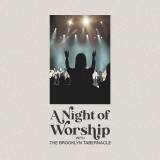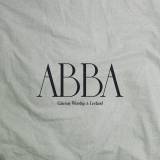LET THE MUSIC FLOW.

Music is designed by the Lord to flow. There are certain ways it will flow and other ways it simply will not. To illustrate let me recall an incident from the second or third grade. A taxidermist visited our class with a small, stuffed animal, a raccoon I think, on a wooden stand. The teacher walked carefully down each isle letting each one of us touch it. When it was my turn, I stroked it from the back toward the head. The fur did not grow that way so all I did was disturb the work of the craftsman, making the smooth hairs stand up in awkward clumps along the path of my hand. The teacher corrected me, "Steve, the hair didn't grow that way. Stroke it the way it grows!" I suppose it embarrassed me enough that I have never forgotten that moment, but in latter years I remember it with a musical application. Sometimes worship leaders do not understand the way music flows, and they try to make it flow backwards. Their praise and worship times end up being a series of awkward clumps, like that raccoon's fur after I finished with it. To avoid this, let's look at the way music is designed to flow.
The flow of tonality involves the relationship between keys.
The worship leader cannot just simply put down songs without reference to their keys because music does not jump around from any key to any key. The major keys are related to each other by the interval of a fifth. The key of C is the fifth of the key of F, so it is quite natural to flow from C to F between songs. When planning a worship series and I am in one key searching for the next song, I search two lists, the one for the key I am in, and the one for the key up one fourth (called the subdominant). Adjacent keys (up 1/2 step, up 1 step) are also easy to move up to by playing the five (the dominant) of the new key. The important thing to remember is that keys flow upward, not downward. One can easily do a song once in Eb and then in F, but to do it the other way around is awkward does not flow. Based on these observations I use three modulations: up 1/2 step, up one step, and up one fourth. These three modulations simplify things for our musicians; they know the modulation chord is always the five of the new key.
Minor keys are more challenging.
Once a minor tonality is established it is best to stay in that mode for a while. When it is time to leave, the options are to go directly to the parallel major (F minor to F major) or to go to the relative major (G minor to Bb major).
MOST COMMON KEY CHANGES
Major Keys:
* up perfect fourth
* up 1/2 step
* up whole step
* up 1/2 step
* up whole step
Minor Keys:
* up 1/2 step
* up whole step
* to parallel major
* to relative major
* up whole step
* to parallel major
* to relative major
Tempos flow together also.
Once a tempo is established, it is best to stay with it until you are ready to go to another tempo for another set of songs. It is distracting to change tempos on every song. Here is a common plan: fast tempo (several songs) / medium tempo (one or two songs) / slow tempo (several songs). Song sequences should not always start fast, move to medium tempo, and finish with slow songs. The models should free us from such rigid thinking. For instance, if we want to scale Mt. Zion to worship at David's tabernacle, we may begin our ascent with slower songs, build to the medium tempo songs, then the fast songs, and finish with songs in a majestic tempo. There are many ways songs can flow together in various tempos.
Styles and meters need to flow together, too. As with tempos, songs should be grouped together according to style. Not all songs in the same tempo are in the same style. A medium tempo song can have a triplet feel or a 16th note pulse or an 8th note pulse. It can be distracting to try to "swing" one song and then do the next with straight 8th notes even though the two are in the same tempo. The same guidelines apply to meters. Music that is constantly switching from 4/4 to 3/4 to 9/8 to 6/8 and so forth, will not flow. Use one meter until it has served its purpose then go to another.
LET THE MUSIC FLOW.
 Reviewed by Admin
on
12:59:00 PM
Rating:
Reviewed by Admin
on
12:59:00 PM
Rating:
 Reviewed by Admin
on
12:59:00 PM
Rating:
Reviewed by Admin
on
12:59:00 PM
Rating:
















Post a Comment